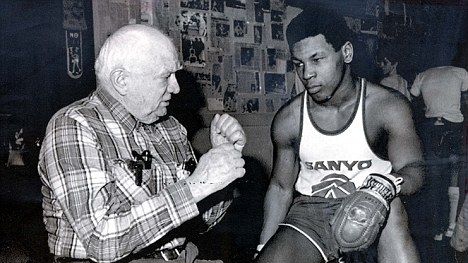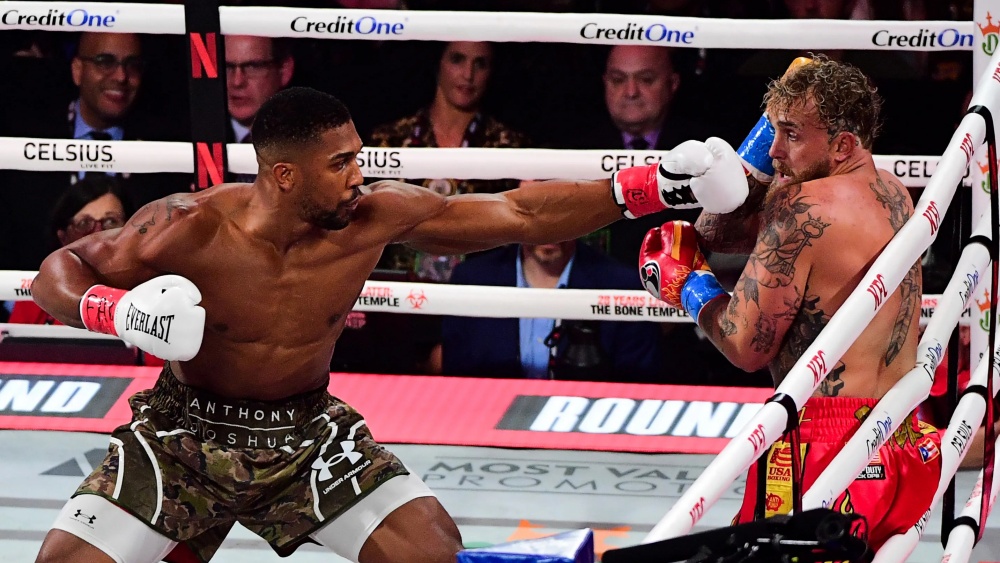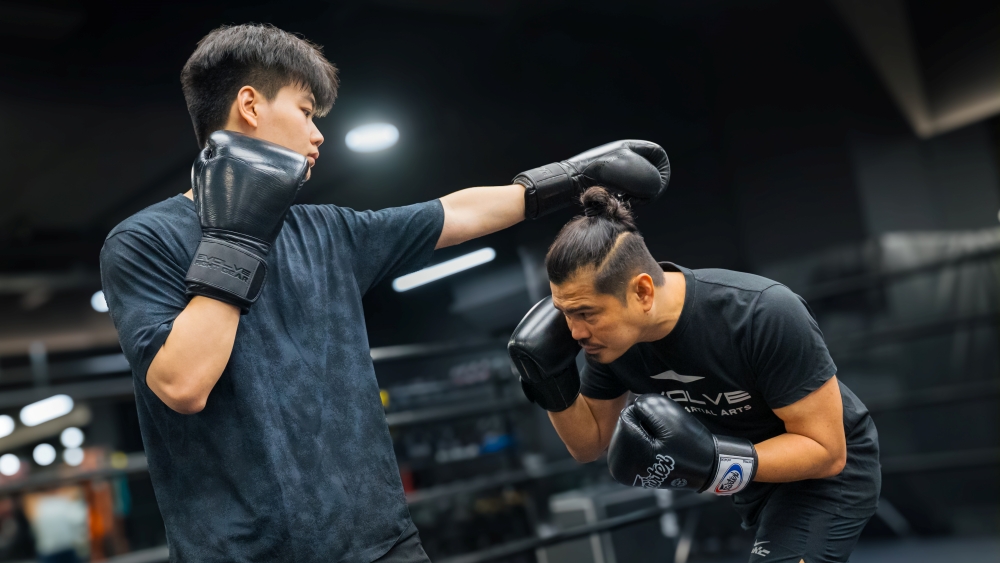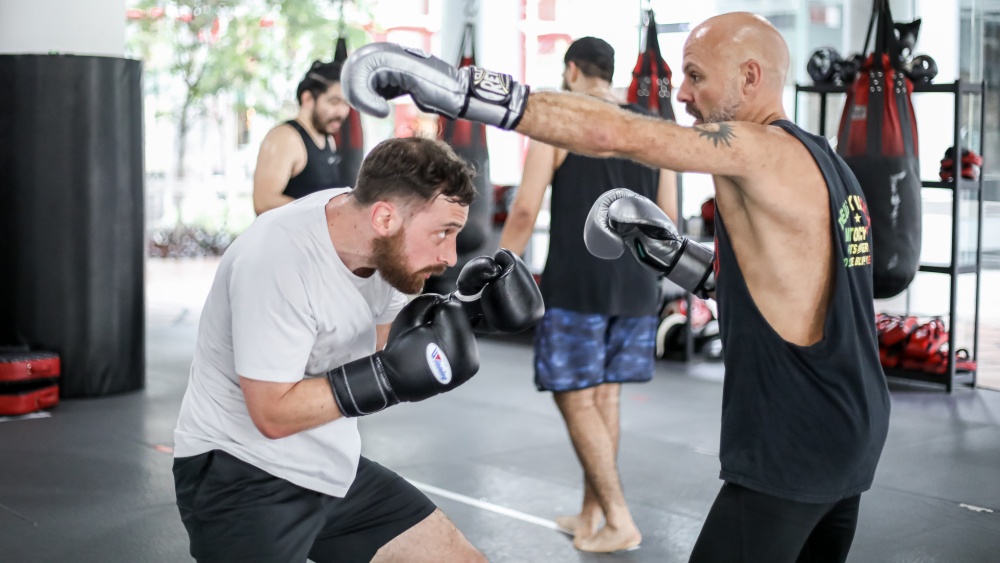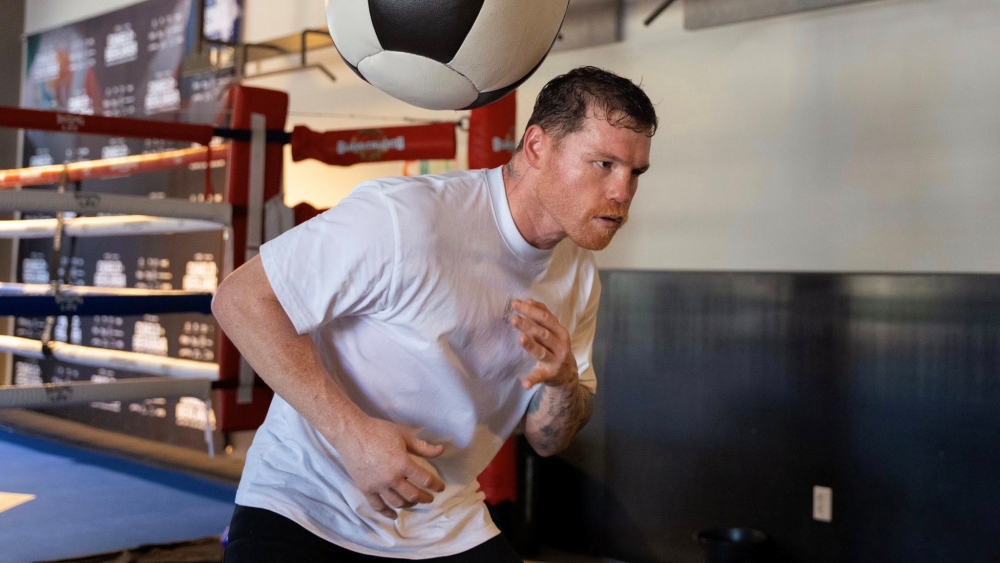Legendary heavyweight world champion “Iron” Mike Tyson was one of the most feared fighters in boxing history. In Tyson’s prime, he was an absolute beast in the ring, a knockout artist chaining electric finishing performances together like a freight train mowing down his opponents. Fighters cowered at the sight of him, and were mentally defeated before the first punch was ever thrown.
Besides his god-given talent and natural physical gifts, Tyson was one of the hardest-working boxers ever. His work ethic, instilled by late great coach Cus D’Amato, is the stuff of legend. Under D’Amato’s guidance, Tyson honed his craft in a dark gym, powering himself through blood, sweat, and tears to improve himself as a fighter every day.
Prior to taking Tyson under his wing, coach D’Amato had already solidified his formula for building world champions, particularly heavyweight champions. So when Tyson came into his fold with his unparalleled physicality, it was a match made in heaven.
At 13-years of age, Tyson was already a force to be reckoned with. He was an absolute physical specimen and could already bench press over 200 pounds. Tyson was a sponge, absorbing every bit of knowledge that one of the greatest minds in boxing history instilled in him. He eventually became D’Amato’s greatest student.
If you’ve ever wanted to be like Mike, we’ve broken down Tyson’s training routine and methodologies, some of which you can add to your own regimen. Let’s take a look at how ‘The Baddest Man on the Planet’ trained in his prime.
Today, Evolve Daily shares how to train like heavyweight legend “Iron” Mike Tyson.
1) Obsessive Training
What set Tyson apart from other fighters of his era was how hard he worked. His training regimens were intense. Despite being considerably younger than all of his opponents, Tyson worked just as hard, if not harder than his veteran foes. As a result, he became the youngest heavyweight world champion in history at age 20.
Tyson didn’t become one of the greatest fighters of all time by being lazy in the gym. During training camp, Tyson was a difficult beast to tame. He was one of the hardest-working fighters ever.
Four or five weeks removed from any fight, Tyson would put in over 50-60 hours each week, training more than once each day, for six hard days before taking a day off. Workouts consisted of traditional Cus D’Amato boxing techniques and drills (many of which remain secrets that were passed on to his protege Teddy Atlas), a bevy of strength and conditioning workouts, weight resistance sessions, and mind conditioning drills. Tyson was known to drop over 15-20 pounds during camp.
Tyson would also spar over 200 rounds every week without headgear, because D’Amato was one of the first few trainers who did away with head protection. D’Amato believed headgear gave fighters a false sense of security.
Also featured prominently in D’Amato’s training routine for Tyson were head movement drills that honed Tyson’s signature Peek-a-boo style. Tyson became obsessed with learning how to box, and he would even practice moves at home, outside of official training time.
One of Tyson’s infamous roadwork training sessions had him jog three miles with 50 pounds on his back. Training intense was a Tyson trademark.
2) Mental Training
https://youtu.be/bJD09c046n8
D’Amato was a major proponent of mental conditioning in boxing. As the architect behind three Hall-of-Fame boxers (Floyd Patterson, Jose Torres, and Mike Tyson), D’Amato put his fighters through a vigorous psychological training routine that forced his pupils to confront, explain, and conquer their deepest fears.
D’Amato’s boxing philosophy was, in fact, considered more as a lifestyle than an actual training routine. The legendary trainer was a firm believer in overcoming obstacles in life through sheer willpower. He believed there wasn’t anything you couldn’t surpass on your way to success, and that was instilled in Tyson early in his career.
When D’Amato entered Tyson’s life, he was a troubled teenager, pulled off a life on the streets. The legendary trainer taught him how to tame his wild side by building his character.
D’Amato often proclaimed that character far outweighed talent in the ring. He did his best to mold Tyson not just as a fighter, but to also make him a better human being.
“It is the mark of a great fighter when he has character, plus skill. Because a fighter with character and skill will often rise and beat a better fighter because of this. Character is that quality upon which you can depend under pressure and other conditions,” D’Amato said famously.
“Character helps them win.”
3) Building Speed and Power
https://youtu.be/NiGXUF9D18s
Tyson was one of the most feared punchers in boxing history, and he harnessed this natural power through training in the gym. Many of Tyson’s gym workouts featured punching and heavy bag work.
D’Amato claimed that there was no such thing as a natural puncher, and that no fighter is born the best. Hard work plays a huge role in training in order to maximize full potential.
Tyson himself explained that his unreal punching power was born from nothing more than working the heavy bag, noting how it trains your body to transfer strength through the hips.
D’Amato realized early on that due to Tyson’s style, and unique body build, that he needed to have devastating punching power with both hands. So the coach had Tyson work a 300-pound heavy bag constantly throughout his training regimen, developing both the left and the right. It was a training technique based on the great Rocky Marciano’s heavy bag routine.
After a few years, Tyson was a heavy bag punisher unlike any other. He had eventually moved to punching water bags, because Tyson said it felt more like hitting a real person.
D’Amato also trained Tyson to focus on bodyweight exercises rather than using weights, because he believed weight lifting slowed a fighter down. Speed was a great focus in D’Amato’s training philosophy, because he often said, “Speed kills.”
4) The Mike Tyson Diet
Of course, all those intense, grueling workouts naturally required a high calorie count — and Tyson ate like an absolute monster.
Tyson’s diet consisted of large portions of protein, usually steak and chicken, carbohydrates like oats, fiber from natural fruit juices and bananas, “Tiger’s Milk”, protein shakes, and supplements. Among his go-to meals was steak and pasta.
Throughout most of his early years, Tyson relied on D’Amato’s live-in housekeeper, Camille, to prepare and cook his meals.
Although Tyson was a disciplined animal in the gym, he was often known to cheat on his diet frequently, and just make up for it in training. He is human, after all. Tyson often snuck in a sugary dessert here and there, his favorite being ice cream topped with Captain Crunch cereal.
5) Sample Training Schedule
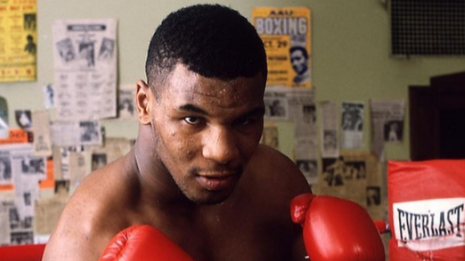
To give you an idea of the kind of schedule Tyson kept throughout his prime years, here’s a sample training routine he followed:
4 am: Wake up. Roadwork for 3-5 miles
6 am: Rest and take a morning nap
10 am: Eat breakfast. Usually oats with fruit, orange juice, supplements and a protein shake – about 1,000 calories
12 pm: 10 rounds of sparring, with calisthenics (sit-ups, push-ups, resistance training)
2 pm: Eat lunch. More carbohydrates like rice, protein such as chicken breasts, vegetables, and lots of water. Around 1,500 calories
3 pm: 4-6 more rounds of sparring, followed by the heavy bag, slip bag, uppercut bag, jump rope, focus mitts, speed bag, and an hour on the stationary bike. Plus three more sets of calisthenics
5 pm: Four sets of calisthenics, then six rounds of shadow boxing
7 pm: Eat dinner. Same protein and fiber sources. Around 1,000 calories
8 pm: Light 30-minute workout, usually a leisurely walk or the exercise bike for recovery purposes
9 pm: Study fight films, meditate and reflect, then go to bed
6) Rest
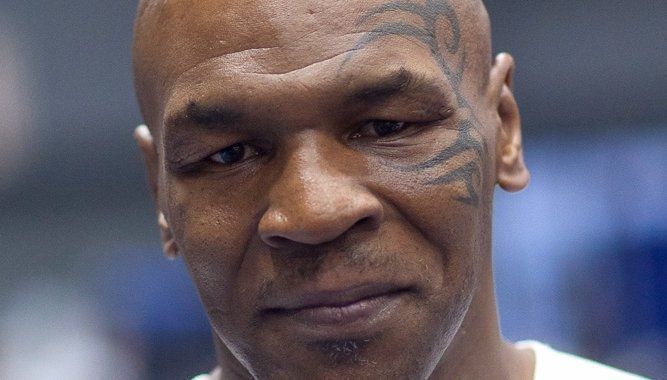
Tyson, just like any elite athlete, would place great value on at least a single day of rest, usually Sundays. D’Amato firmly believed in active rest and lots of sleep. During Tyson’s day off, he would do extra chores around the house, and further condition his mind by constantly studying fight films.
Tyson also loved caring for and playing with his pigeons, often sneaking away back into his old neighborhood in Brooklyn. It was a good mental break for him, because he absolutely loved his pigeons.
Further to D’Amato’s point of building character and training the mind, the legendary trainer believed resting on Sundays put Tyson in a more relaxed state.
“Boxing is a contest of character and ingenuity. The boxer with more will, determination, desire, and intelligence is always the one who comes out the victor. It’s not all about training,” said D’Amato.
If you enjoyed this article, you may also like:
